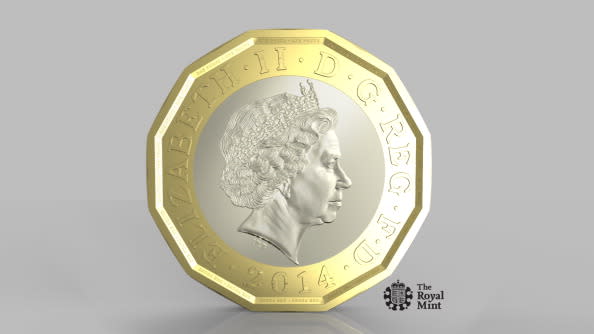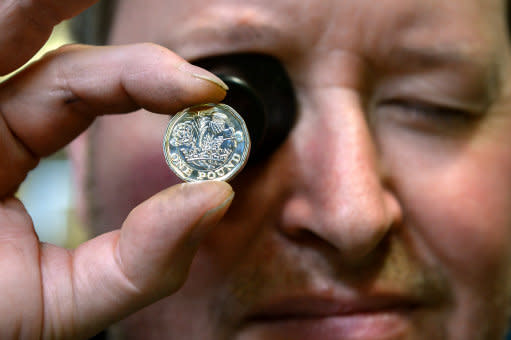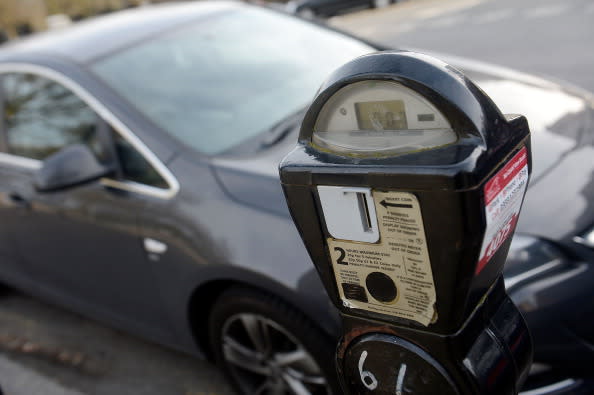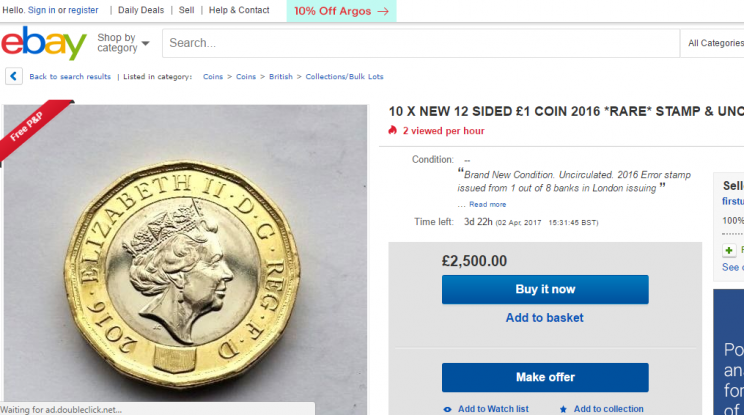Everything you need to know about the launch of the 12-sided £1 coin
Britain’s newest form of currency comes into circulation from Tuesday in the unusual shape of the 12-sided £1 coin.
The coin, described as the most secure currency ever developed by the Royal Mint, will replace the ’round pound’.
After 34 years, the old £1 coin will no longer be legal tender come October, so here’s everything you need to know as Britain says ‘out with the old and in with the new’.
What’s the background?
The round pound was introduced in April 1983, replacing the tired and worn paper £1 notes. There are about 2.1 billion £1 coins in circulation – but about 700 million of them are “missing”; stashed away in piggy banks or loose change jars, down the back of sofas, in cup holders in cars, or just rattling around in coat/trouser pockets.

The new 12-sided £1 coin is based on the pre-decimal ‘threepenny bit’. (Royal Mint via Getty Images)
One of the principal reasons for replacing the coin is security: according to the Royal Mint, one in every 30 £1 coins is fake.
The Royal Mint says: “… the government does not believe that the current rate [of fake coins] is critically high (either in absolute terms or relative to levels in other economies).
“However, cash is central to the overall integrity of a currency, and the costs of a loss of confidence can be very large. It is therefore appropriate for the government to act cautiously and take the initiative in addressing any perceived weaknesses.”

So, how is this 12-sided coin addressing the issue?
The coin will be the “most secure circulating coin in the world”, says the Mint. One of the key features is its shape – a subtle dodecagon with sides have been smoothed slightly after the original sharper edges wore holes in pockets.
Another hi-tech security feature is a hologram which changes from a £ symbol to the number 1 when viewed from different angles. There’s also a top secret security measure built into the coin and tiny milled lettering on the inside rim of the coin.
Although the Royal Mint is not saying what, exactly, the hidden security measure is, it is understood to involve material inside the coin itself which can be detected when electronically scanned by coin-counting or payment machines. Some have speculated the “code” is actually on the Queen’s head on each coin.
It will be made from two types of metal – nickel-brass outer; nickel-plated homogeneous non-ferrous inner. The Mint will strike a billion of the new coins, which will feature the national flora of the UK’s four countries emerging from a coronet.

That’s the upside, what’s the downside?
While business and industry has been aware of the impending change for years, many appear to have been slow to adapt. Concerns have been raised that council car parks, for example, will not all be ready to accept the new coin. The same worries apply to vending machines and supermarket trolleys. The British Parking Association has warned about a quarter of the country’s 100,000 pay and display machines will not be ready to accept the new coin.
The Automatic Vending Association (AVA) says: “In 2011, the new 5p and 10p coins were introduced at a cost to the industry of £28.9 million and it is estimated that the upgrades required for the new £1 coin will cost approximately £32 million.”
That said, however, the majority of businesses are confident they will have made the transition by the time the old coin is officially withdrawn in October.

I’ve got a jar full of £1 coins at home, what should I do?
The round pound will remain legal tender until October 15, so you can spend them between now and then or take them into a bank. Alternatively, from March 28, you can take them to your local Post Office branch to exchange them for new ones.
After October 15, you will still be able to deposit the old coin at your bank – but be aware, the likes of HSBC, Santander, Barclays, Lloyds and others have said they will only offer this service to their own customers.
Over the next six months, you’ll still be getting old £1 coins in your change but, much like the new polymer £5 note, you will begin to see more new and fewer old as you get change in pubs, coffee shops and elsewhere.
Will there be any collectables?

Test versions of the new coins, sent out as part of sets before the launch or given to businesses to prepare for the new addition have been offered for sale on eBay for up to £2,500.
The 10 “rare” coins, stamped 2016 so well ahead of this week’s launch, are some of about 200,000 pushed out on the test runs. Other individual coins have been selling for hundreds of pounds.
Although highly sought after by collectors, they cannot be spent in shops. The Mint also says it will be producing special commemorative coins and sets of coins over the coming months, much as it does with other coinage.

 Yahoo Finance
Yahoo Finance 
